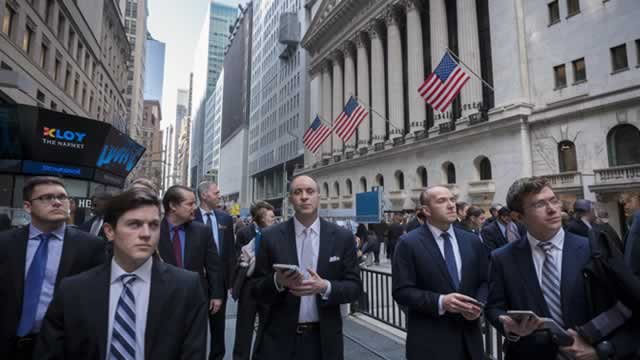Slowing Inflation Amidst Trade Tensions: A Delicate Balance
In an unexpected turn of events, the US inflation rate slowed down more than anticipated in March, despite the escalating trade tensions instigated by President Trump’s tariff war.
March Inflation Data: A Surprising Dip
The Consumer Price Index (CPI), a key measure of inflation, rose by 0.1% in March, following a 0.2% increase in February. Economists had predicted a 0.2% rise for March. The core CPI, which excludes volatile food and energy prices, also increased by 0.1%, matching expectations.
The Impact on Consumers: A Mixed Bag
The slowing inflation rate is a welcome sign for consumers, as it means prices for goods and services are not increasing as rapidly as anticipated. However, the tariffs imposed by the Trump administration could potentially lead to higher prices for certain goods, especially those imported from countries subjected to the tariffs.
Global Implications: A Complex Web of Consequences
The trade tensions and resulting inflation dynamics are not confined to the US. Countries that export goods to the US may experience increased inflation due to higher prices for their exports. Conversely, countries that import goods from the US may see lower inflation as US goods become cheaper, assuming the tariffs are not passed on in full to consumers.
A Tale of Two Economies: US and China
Two of the world’s largest economies, the US and China, are at the heart of this trade conflict. Chinese inflation came in at 2.3% in March, slightly above expectations. However, the impact of the US tariffs on the Chinese economy is yet to be fully realized. Some analysts predict that the tariffs could lead to a slowdown in Chinese economic growth, as exports to the US are a significant component of China’s economy.
A Wait-and-See Approach: The Role of Central Banks
Central banks around the world are closely monitoring the situation. The US Federal Reserve, for instance, has signaled that it is prepared to be patient with regards to raising interest rates, given the slower-than-expected inflation. Other central banks, such as the European Central Bank and the Bank of Japan, are also in a wait-and-see mode, as they assess the impact of global economic developments on their respective economies.
The Road Ahead: Uncertainties and Opportunities
The interplay of inflation, trade tensions, and monetary policy creates a complex and uncertain economic landscape. While the slowing inflation rate is a positive development for consumers, the long-term implications of the trade tensions remain uncertain. As the situation evolves, it is essential for individuals and businesses to stay informed and adapt to the changing economic landscape.
- US inflation slowed more than expected in March
- President Trump’s tariff war contributed to the unexpected dip
- Consumer prices rose by 0.1% in March, below expectations
- Core inflation also increased by 0.1%, in line with expectations
- Slowing inflation is a welcome sign for consumers but could lead to higher prices for certain goods
- Trade tensions have global implications, affecting economies both importing and exporting to the US
- Central banks are closely monitoring the situation and adopting a wait-and-see approach
In conclusion, the unexpected slowdown in US inflation amidst escalating trade tensions presents a delicate balance. While the lower inflation rate is a positive development for consumers, the long-term implications of the trade tensions remain uncertain. As the situation unfolds, it is crucial for individuals and businesses to remain informed and adapt to the evolving economic landscape.





